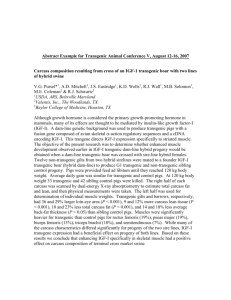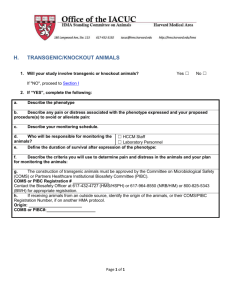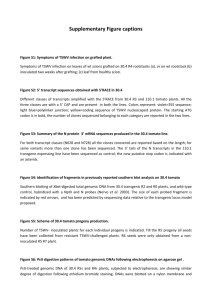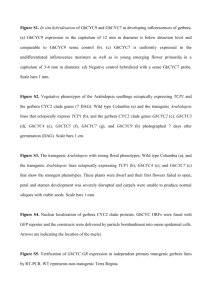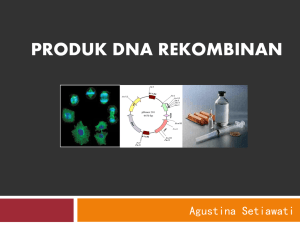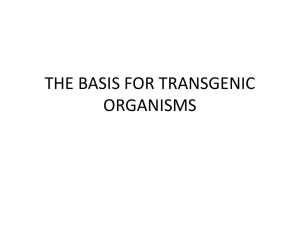CMV-based episomal vector is progressively lost in vivo in multi
advertisement
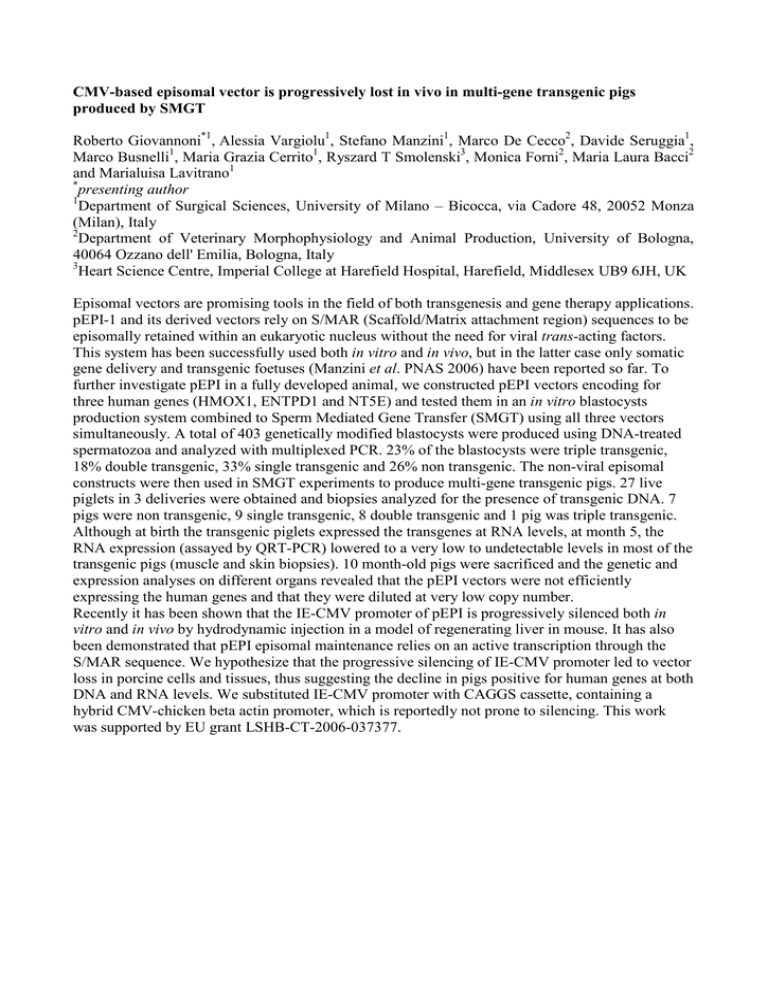
CMV-based episomal vector is progressively lost in vivo in multi-gene transgenic pigs produced by SMGT Roberto Giovannoni*1, Alessia Vargiolu1, Stefano Manzini1, Marco De Cecco2, Davide Seruggia1, Marco Busnelli1, Maria Grazia Cerrito1, Ryszard T Smolenski3, Monica Forni2, Maria Laura Bacci2 and Marialuisa Lavitrano1 * presenting author 1 Department of Surgical Sciences, University of Milano – Bicocca, via Cadore 48, 20052 Monza (Milan), Italy 2 Department of Veterinary Morphophysiology and Animal Production, University of Bologna, 40064 Ozzano dell' Emilia, Bologna, Italy 3 Heart Science Centre, Imperial College at Harefield Hospital, Harefield, Middlesex UB9 6JH, UK Episomal vectors are promising tools in the field of both transgenesis and gene therapy applications. pEPI-1 and its derived vectors rely on S/MAR (Scaffold/Matrix attachment region) sequences to be episomally retained within an eukaryotic nucleus without the need for viral trans-acting factors. This system has been successfully used both in vitro and in vivo, but in the latter case only somatic gene delivery and transgenic foetuses (Manzini et al. PNAS 2006) have been reported so far. To further investigate pEPI in a fully developed animal, we constructed pEPI vectors encoding for three human genes (HMOX1, ENTPD1 and NT5E) and tested them in an in vitro blastocysts production system combined to Sperm Mediated Gene Transfer (SMGT) using all three vectors simultaneously. A total of 403 genetically modified blastocysts were produced using DNA-treated spermatozoa and analyzed with multiplexed PCR. 23% of the blastocysts were triple transgenic, 18% double transgenic, 33% single transgenic and 26% non transgenic. The non-viral episomal constructs were then used in SMGT experiments to produce multi-gene transgenic pigs. 27 live piglets in 3 deliveries were obtained and biopsies analyzed for the presence of transgenic DNA. 7 pigs were non transgenic, 9 single transgenic, 8 double transgenic and 1 pig was triple transgenic. Although at birth the transgenic piglets expressed the transgenes at RNA levels, at month 5, the RNA expression (assayed by QRT-PCR) lowered to a very low to undetectable levels in most of the transgenic pigs (muscle and skin biopsies). 10 month-old pigs were sacrificed and the genetic and expression analyses on different organs revealed that the pEPI vectors were not efficiently expressing the human genes and that they were diluted at very low copy number. Recently it has been shown that the IE-CMV promoter of pEPI is progressively silenced both in vitro and in vivo by hydrodynamic injection in a model of regenerating liver in mouse. It has also been demonstrated that pEPI episomal maintenance relies on an active transcription through the S/MAR sequence. We hypothesize that the progressive silencing of IE-CMV promoter led to vector loss in porcine cells and tissues, thus suggesting the decline in pigs positive for human genes at both DNA and RNA levels. We substituted IE-CMV promoter with CAGGS cassette, containing a hybrid CMV-chicken beta actin promoter, which is reportedly not prone to silencing. This work was supported by EU grant LSHB-CT-2006-037377.



